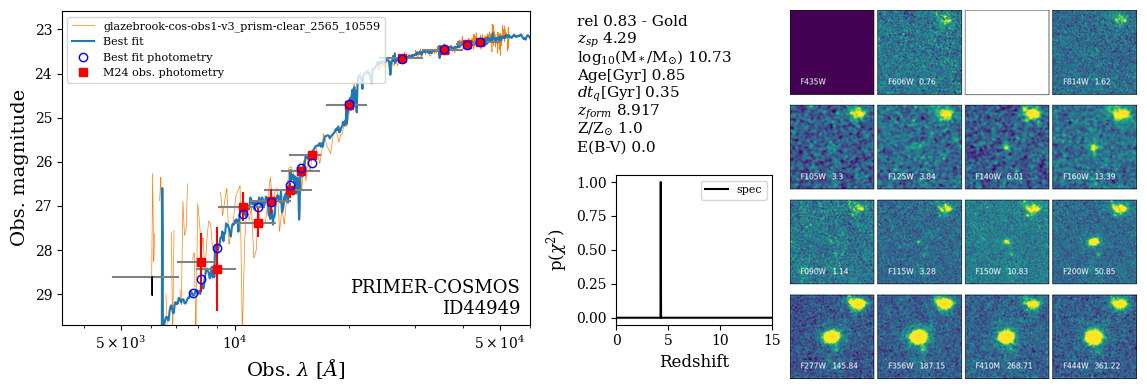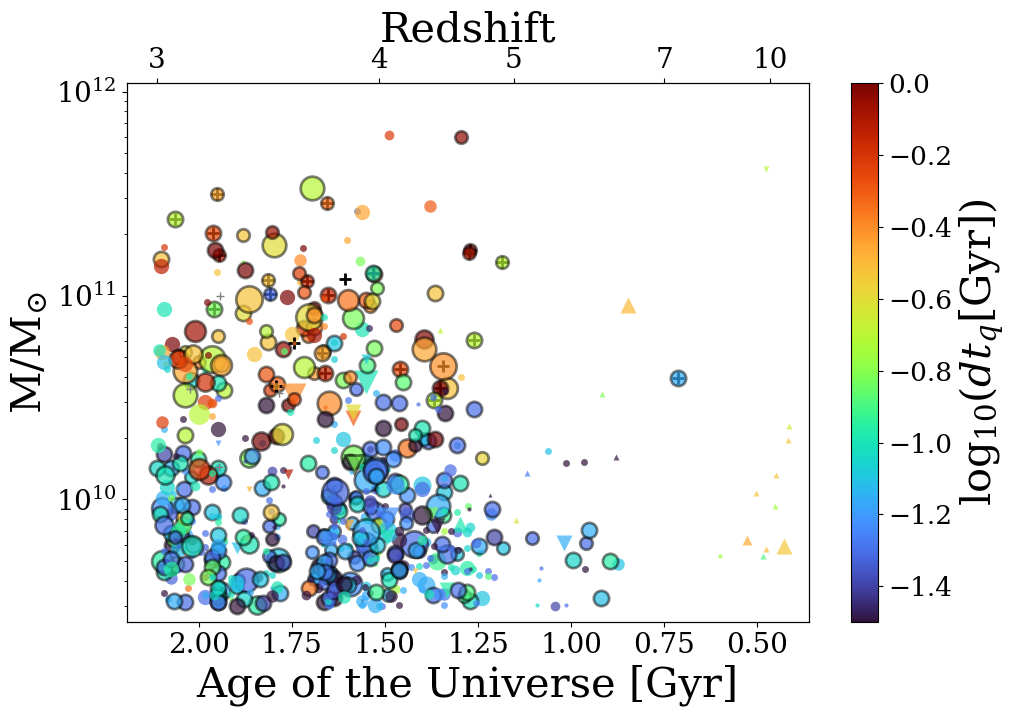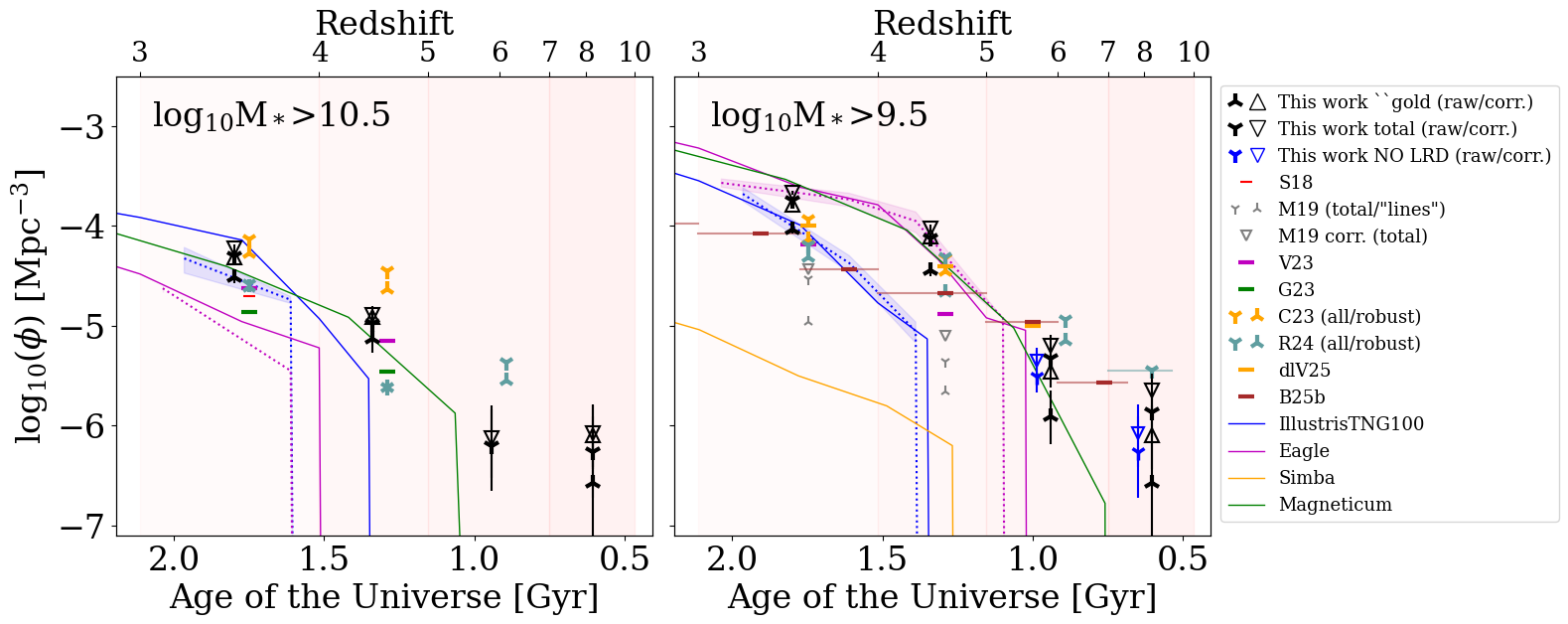Merlin et al. 2025, submitted to Open Journal of Astrophysics, arXiv

The existence of a population of quiescent galaxies in the early Universe has been extensively confirmed observationally. We conduct a systematic search for log(M∗/M⊙) ≥ 9.5 quiescent galaxies at z > 3 in six extragalactic deep fields observed with NIRCam, with the goal of extracting their physical and statistical features in a uniform and self-consistent manner, thus creating a robust baseline to compare with theoretical predictions. We exploit the ASTRODEEP-JWST photometric catalogs to single out robust candidates, including sources quenched only a few tens of Myr before the observation. We apply a SED-fitting procedure which explores three functional forms of star formation history and the χ2 probabilities of the solutions, with additional checks to minimise the contamination from interlopers, tuning our selection criteria against available spectroscopic data from the DAWN archive and simulated catalogs.

We select 633 candidates, which we rank by a reliability parameter based on the probabilities of the quiescent and alternative star-forming solutions, with 291 candidates tagged as “gold”. According to the best-fit models, 79% of the massive (log(M∗/M⊙) ≥ 10.5) quiescent galaxies at 3 < z < 5 stopped forming stars at least 150 Myr before the time of observation, while 89% of low mass sources (9.5 ≤ log(M∗/M⊙) < 10.5) have been quenched for less than 150 Myr.
The abundance of low mass old quiescent systems does not increase significantly with time from z = 5 to 3, which we interpret as an indication that the quenching must be temporary in this mass regime: only massive galaxies appear to be permanently quenched, while low mass objects seem to be experiencing a short episode of quenching followed by re-juvenation (“breathing”), consistent with a “downsizing” scenario of galaxy formation; rather than inferring it from the archaeological analysis of local galaxies, we can now witness it while it is happening. Interestingly, we also find an abrupt drop of one order of magnitude in the density of massive quiescent candidates at z > 5.
We derive estimat es for the number density of early passive galaxies up to z = 10, including corrections for completeness and contamination, and compare it against the predictions of various models: while the global number density of quenched galaxies can be reproduced by recent numerical simulations, tensions with data remain in the modelisation of the observed bimodality of time passed since quenching as a function of mass.
es for the number density of early passive galaxies up to z = 10, including corrections for completeness and contamination, and compare it against the predictions of various models: while the global number density of quenched galaxies can be reproduced by recent numerical simulations, tensions with data remain in the modelisation of the observed bimodality of time passed since quenching as a function of mass.
The full list of quiescent sources can be downloaded from here.
